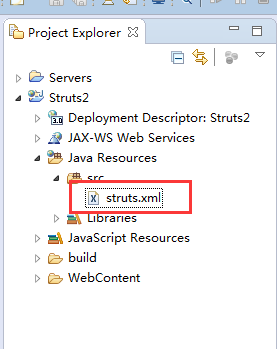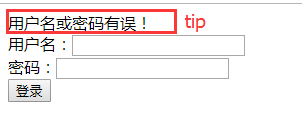Struts2学习笔记——Struts2搭建和第一个小程序
1.新建web项目

2.配置Struts2核心过滤器
(1)打开web.xml文件,做以下配置:
<?xml version="1.0" encoding="UTF-8"?> <web-app xmlns:xsi="http://www.w3.org/2001/XMLSchema-instance" xmlns="http://java.sun.com/xml/ns/javaee" xsi:schemaLocation="http://java.sun.com/xml/ns/javaee http://java.sun.com/xml/ns/javaee/web-app_3_0.xsd" id="WebApp_ID" version="3.0"> <welcome-file-list> <welcome-file>login.jsp</welcome-file> </welcome-file-list> <!-- 配置Struts2的核心过滤器,过滤所有请求 --> <filter> <filter-name>struts2</filter-name> <filter-class>org.apache.struts2.dispatcher.ng.filter.StrutsPrepareAndExecuteFilter</filter-class> </filter> <filter-mapping> <filter-name>struts2</filter-name> <url-pattern>/*</url-pattern> </filter-mapping> </web-app>
(2)在src目录下新建一个struts.xml文件:

3.完成第一个小程序:签到
要求:
①登录:在WEB-INF目录下新建一个login.jsp页面,输入用户名和密码,传入后端进行判断,如果用户名为admin且密码为1234,则跳转到签到页面,否则跳转到登录页面并提示“用户名或密码不正确!”。
②签到:在WEB-INF目录下新建一个sign.jsp页面,进行签到和签退,并提示相应操作的时间。
(1)login.jsp页面:
<%@ page language="java" contentType="text/html; charset=UTF-8" pageEncoding="UTF-8"%> <!DOCTYPE html PUBLIC "-//W3C//DTD HTML 4.01 Transitional//EN" "http://www.w3.org/TR/html4/loose.dtd"> <html> <head> <meta http-equiv="Content-Type" content="text/html; charset=UTF-8"> <title>Insert title here</title> </head> <body> <form action="sign_signLogin" method="post"> ${tip}<br> 用户名:<input type="text" name="name"><br> 密码:<input type="password" name="pwd"><br> <input type="submit" value="登录"> </form> </body> </html>
(2)sign.jsp页面:
<%@ page language="java" contentType="text/html; charset=UTF-8" pageEncoding="UTF-8"%> <!DOCTYPE html PUBLIC "-//W3C//DTD HTML 4.01 Transitional//EN" "http://www.w3.org/TR/html4/loose.dtd"> <html> <head> <meta http-equiv="Content-Type" content="text/html; charset=UTF-8"> <title>Insert title here</title> </head> <body> <a href="sign_signIn">签到</a><br> <a href="sign_signOut">签退</a><br> ${tip}<br> </body> </html>
(3)新建SignAction.java类:
package com.struts2_01; import java.util.Date; import javax.servlet.http.HttpServletRequest; import org.apache.struts2.ServletActionContext; public class SignAction { /** * 登录 */ public String signLogin() { HttpServletRequest req = ServletActionContext.getRequest();//获取HttpServletRequest对象 String username = req.getParameter("name");//获取输入的用户名 String pwd = req.getParameter("pwd");//获取密码 if ("admin".equals(username) && "1234".equals(pwd)) { return "sign";//返回的字符串,在struts.xml文件中配置 } req.setAttribute("tip", "用户名或密码有误!"); return "login";//返回的字符串,在struts.xml文件中配置 } /** * 签到 */ public String signIn(){ HttpServletRequest req = ServletActionContext.getRequest(); req.setAttribute("tip", "签到时间:"+new Date()); return "sign"; } /** * 签退 */ public String signOut() { HttpServletRequest req = ServletActionContext.getRequest(); req.setAttribute("tip", "签退时间:"+new Date()); return "sign"; } }
(4)最重要的一步:配置struts.html文件:
<?xml version="1.0" encoding="UTF-8"?> <!DOCTYPE struts PUBLIC "-//Apache Software Foundation//DTD Struts Configuration 2.3//EN" "http://struts.apache.org/dtds/struts-2.3.dtd"> <struts> <package name="default" namespace="/" extends="struts-default"> <!-- 配置调用哪个类中的哪个方法,action中的name表示前端访问的url地址,method是方法名,class是完整类名 --> <!-- <action name="signIn" method="signIn" class="com.struts2_01.SignAction"></action> <action name="signOut" method="signOut" class="com.struts2_01.SignAction"></action> --> <!-- struts2动态方法调用,作用是不用想上面那样每次调用方法都要创建一个action标签 sign_* :*号是占位符,代表方法名,url用sign_为前缀,如sign_signIn、sign_signOut。 {1} :表示name中的第一个*号 --> <action name="sign_*" method="{1}" class="com.struts2_01.SignAction"> <!-- 指定方法执行后跳转的路径 name的值和方法中返回的字符串一致 /sign.jsp是跳转的页面 --> <result name="sign">/sign.jsp</result> <result name="login">/login.jsp</result> </action> </package> </struts>
4.测试(Tomcat环境下)

登录成功后跳转页面,点击签到后的效果(签到时间显示):




